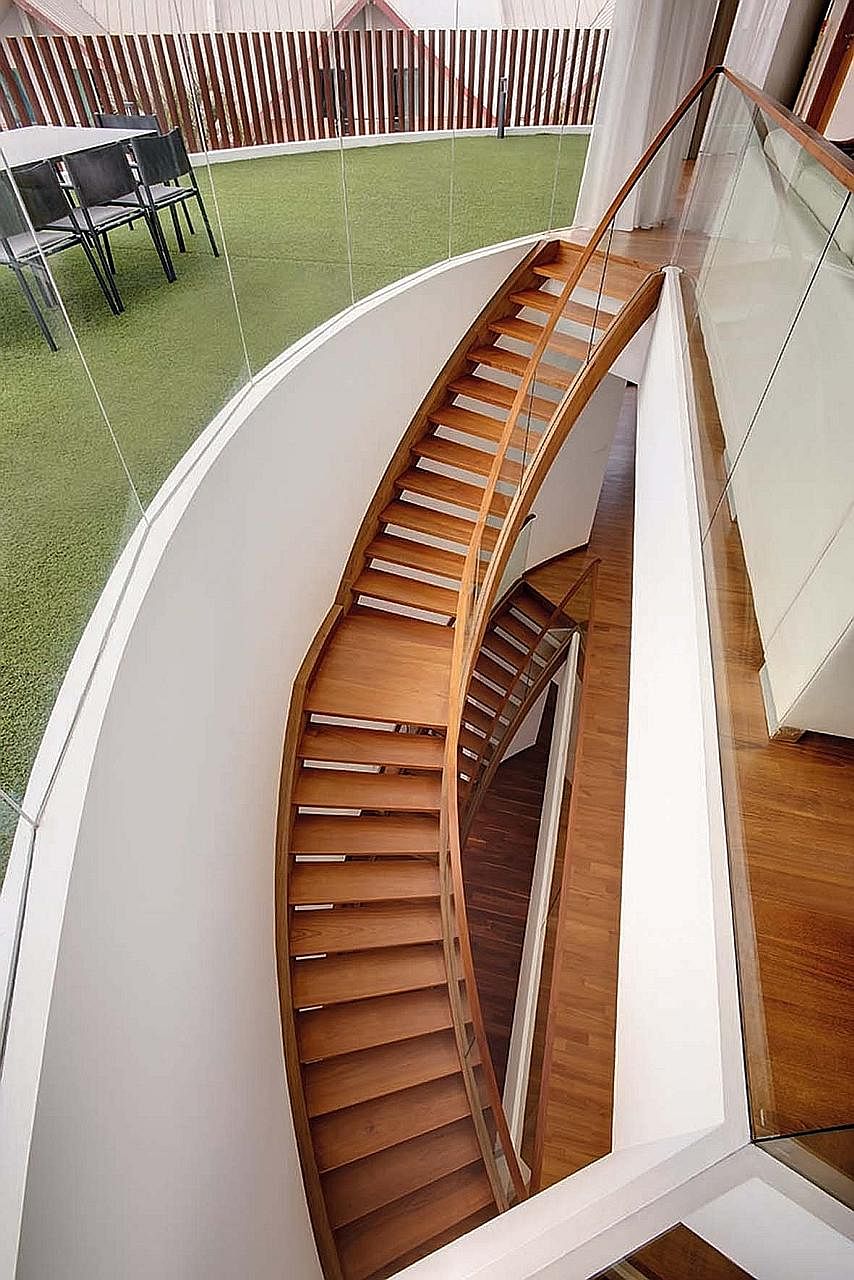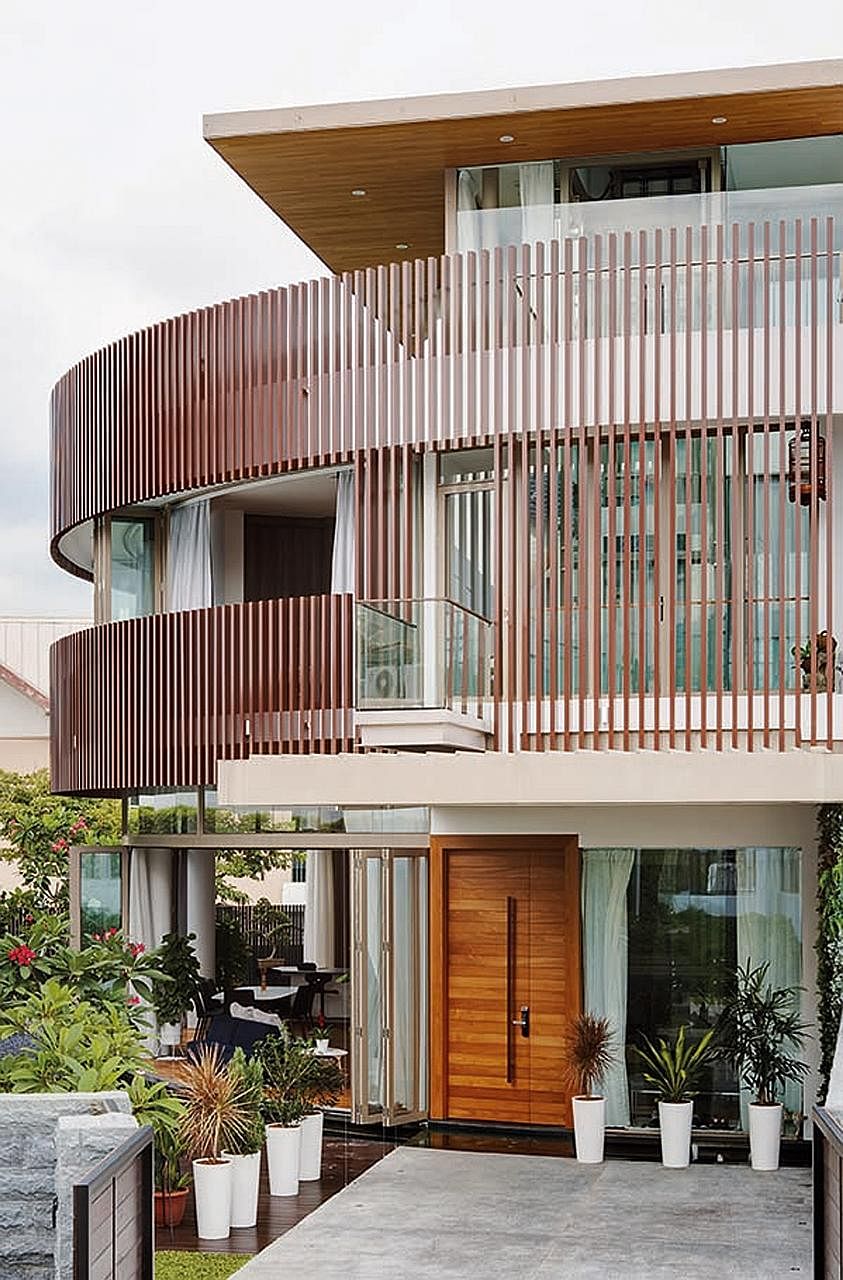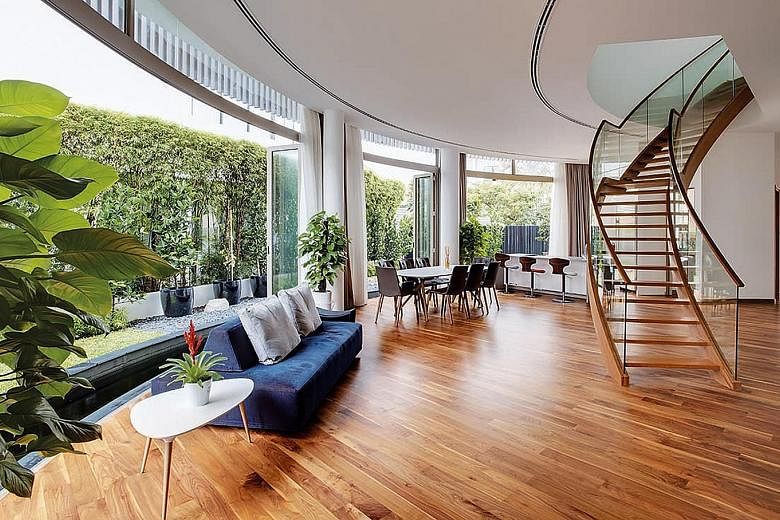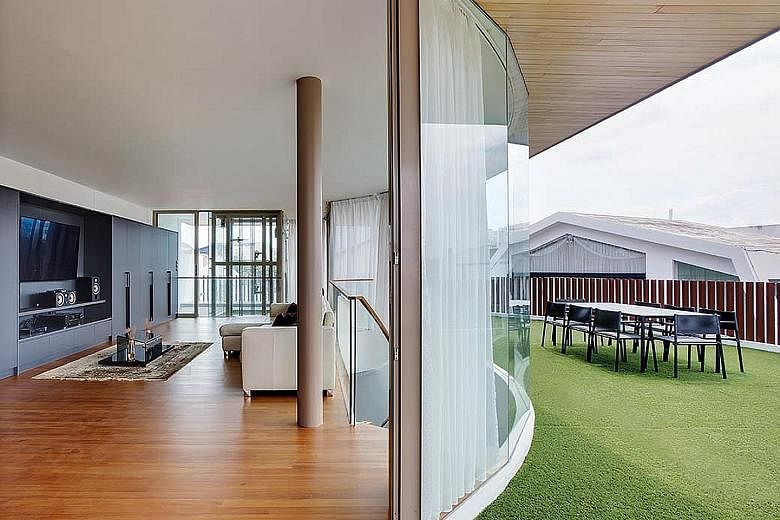Call it a house with curves to love.
The three-storey semi-detached house in Moreton Close in Serangoon Garden has a semicircular form that takes advantage of the triangular plot without sacrificing on space.
Designed by architect Lim Ai Tiong of home-grown firm Lato Architects/Design, the 6,800 sq ft house replaces a single-storey building that had less space, a dated cottage style and required extensive maintenance.
This may be Mr Lim's first time designing a semicircular house, but the home owners, who are in their 60s, "liked the half-moon form right from the start and did not express any apprehension at all".
He adds: "They specifically liked the shape of the house as well as the koi pond that sweeps around the arc, giving the house a floating appearance."
Nevertheless, an interesting form does not negate the need for practical considerations and programmatic requirements.

To maximise the efficiency of the floorplan, Mr Lim lined up the more enclosed and rectilinear rooms along the party wall facing the concave part of the curve, while keeping the spaces and furniture arrangement along the curve more fluid and open.
The curved wing houses the living and dining rooms, dry and wet kitchens on the first storey, and the master suite comprising the bedroom, bathroom, walk-in wardrobe and study on the second storey. Given their bigger footprint, it is more logical to place these larger spaces within this wing, which also offers views outside.
Other areas, such as the family room, powder room, maid's room, laundry area and guest suites are in the rectangular wing adjacent to the party wall.
The contrast between the curvilinear and rectilinear forms creates a meaningful dialogue that ties the whole scheme together, but what occupies the space between the two is equally important.
A long corridor separates the wings, with doors at either end to facilitate natural cross-ventilation.
While an incidental space like this one can become a remnant area, Mr Lim saw its potential and designed a statement piece here - a dramatic curved staircase.
Unlike the lower two storeys, the attic is a simple rectangular box.
"Initially, I thought I would top off the massing with a third semi-circular form, but, after close to 10 study models on the form and composition of the house, I decided that a rectangular volume sitting right up against the party wall seems to complete and balance the whole composition best," said Mr Lim.

After the completion of the $2-million construction, which took about 15 months, the owners moved into the house in the first quarter of last year.
While it looks nothing like the runof-the-mill semi-detached home, the form was created to work around the site conditions and not merely as an attempt to create something different for the sake of making an architectural statement.
"Every project has a unique set of parameters arising from the site, orientation and client's brief, which in turn generates a unique design response," says Mr Lim.
• This article first appeared in the December 2018 issue of Home & Decor, which is published by SPH Magazines.
• Get the January and latest issue of Home & Decor (below) now at all newsstands or download the digital edition of Home & Decor from the App Store, Magzter or Google Play. Also, see more inspiring homes at www.homeanddecor.com.sg



